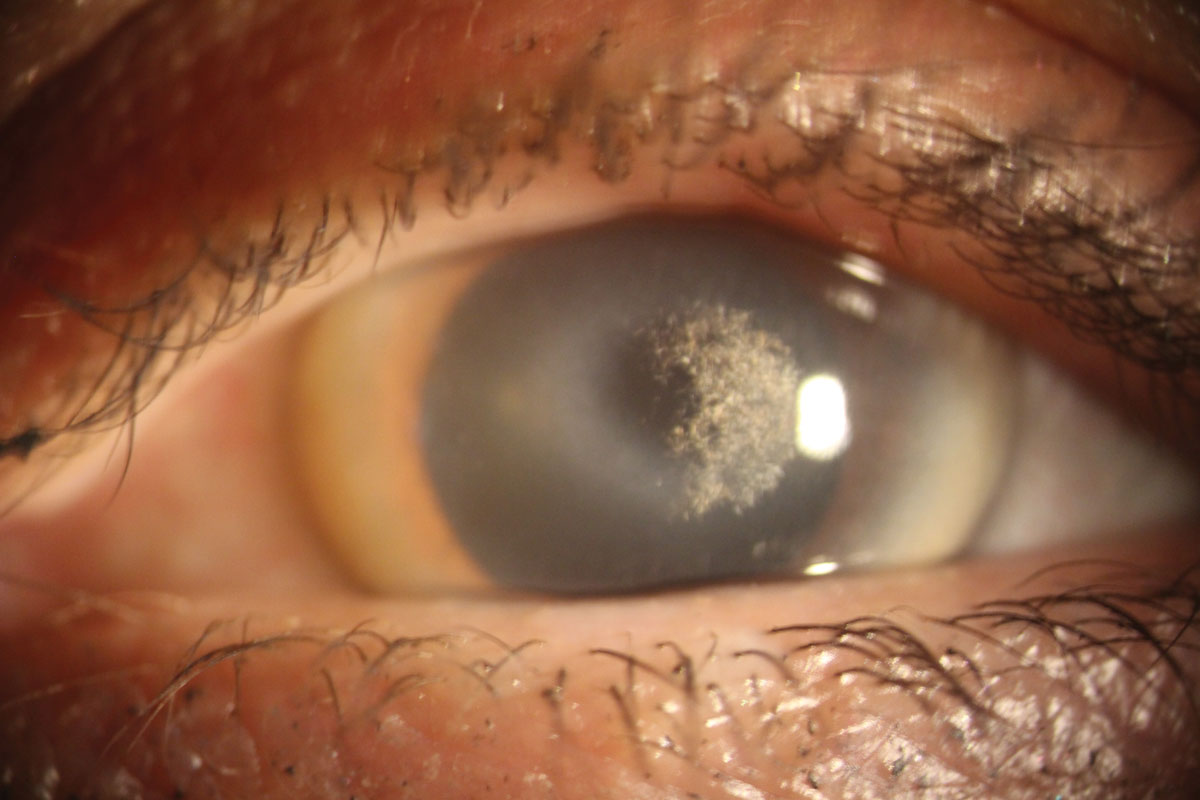
Corneal Dystrophy-Perceptive Deafness Syndrome is a rare genetic disorder that affects both the eyes and ears. This condition leads to progressive vision loss due to corneal dystrophy and hearing impairment from perceptive deafness. Corneal dystrophy involves the clouding or scarring of the cornea, the eye's clear outer layer, while perceptive deafness refers to hearing loss caused by problems in the inner ear or auditory nerve. Understanding this syndrome is crucial for early diagnosis and management. In this post, we'll explore 20 intriguing facts about Corneal Dystrophy-Perceptive Deafness Syndrome, shedding light on its causes, symptoms, and potential treatments.
What is Corneal Dystrophy-Perceptive Deafness Syndrome?
Corneal Dystrophy-Perceptive Deafness Syndrome (CDPD) is a rare genetic disorder. It affects both the eyes and ears, leading to vision and hearing problems. Understanding this condition can help those affected manage their symptoms better.
-
CDPD is a genetic disorder: This condition is inherited, meaning it is passed down from parents to children through their genes.
-
It affects the cornea: The cornea is the clear, dome-shaped surface that covers the front of the eye. In CDPD, the cornea becomes cloudy, leading to vision problems.
-
Hearing loss is a key symptom: People with CDPD often experience perceptive deafness, which means their inner ear or the nerve pathways from the inner ear to the brain are affected.
-
It is a progressive condition: Symptoms of CDPD can worsen over time. Vision and hearing may deteriorate as the person ages.
Symptoms of Corneal Dystrophy-Perceptive Deafness Syndrome
Recognizing the symptoms early can help in managing CDPD effectively. Here are some common signs to look out for:
-
Blurred vision: As the cornea becomes cloudy, vision can become blurry or hazy.
-
Difficulty seeing at night: Night vision can be particularly challenging for those with CDPD.
-
Sensitivity to light: Bright lights may cause discomfort or pain in the eyes.
-
Hearing difficulties: Trouble hearing conversations, especially in noisy environments, is a common symptom.
Causes and Risk Factors
Understanding what causes CDPD and who is at risk can provide insight into this rare condition.
-
Genetic mutations: Specific changes in genes are responsible for CDPD. These mutations affect the proteins that help maintain the health of the cornea and inner ear.
-
Family history: Having a family member with CDPD increases the risk of inheriting the condition.
-
No known environmental factors: Unlike some other conditions, CDPD is not influenced by environmental factors like diet or lifestyle.
Diagnosis and Testing
Accurate diagnosis is crucial for managing CDPD. Here’s how doctors identify the condition:
-
Eye exams: Regular eye exams can detect changes in the cornea that indicate CDPD.
-
Hearing tests: Audiologists perform tests to assess hearing loss and determine if it is related to CDPD.
-
Genetic testing: DNA tests can identify the specific genetic mutations responsible for CDPD.
Treatment Options
While there is no cure for CDPD, treatments can help manage symptoms and improve quality of life.
-
Corneal transplants: In severe cases, a corneal transplant may be necessary to restore vision.
-
Hearing aids: These devices can amplify sound and help those with hearing loss hear better.
-
Regular monitoring: Frequent check-ups with eye and ear specialists are important to track the progression of the condition.
Living with Corneal Dystrophy-Perceptive Deafness Syndrome
Managing daily life with CDPD can be challenging, but there are ways to cope.
-
Support groups: Connecting with others who have CDPD can provide emotional support and practical advice.
-
Assistive devices: Tools like magnifying glasses for reading and special phones for the hearing impaired can make daily tasks easier.
-
Education and awareness: Learning about CDPD and educating others can help reduce stigma and improve understanding of the condition.
Final Thoughts on Corneal Dystrophy-Perceptive Deafness Syndrome
Corneal Dystrophy-Perceptive Deafness Syndrome, though rare, impacts lives significantly. Understanding its symptoms, causes, and treatment options can help those affected manage their condition better. Regular check-ups, early diagnosis, and appropriate interventions are crucial in improving quality of life.
Awareness and education about this syndrome can lead to better support systems and resources for patients and their families. If you or someone you know shows signs of this syndrome, consult a healthcare professional for guidance.
Staying informed and proactive can make a big difference. Remember, knowledge is power, especially when dealing with health conditions. Stay curious, stay informed, and take charge of your health journey.
Was this page helpful?
Our commitment to delivering trustworthy and engaging content is at the heart of what we do. Each fact on our site is contributed by real users like you, bringing a wealth of diverse insights and information. To ensure the highest standards of accuracy and reliability, our dedicated editors meticulously review each submission. This process guarantees that the facts we share are not only fascinating but also credible. Trust in our commitment to quality and authenticity as you explore and learn with us.


